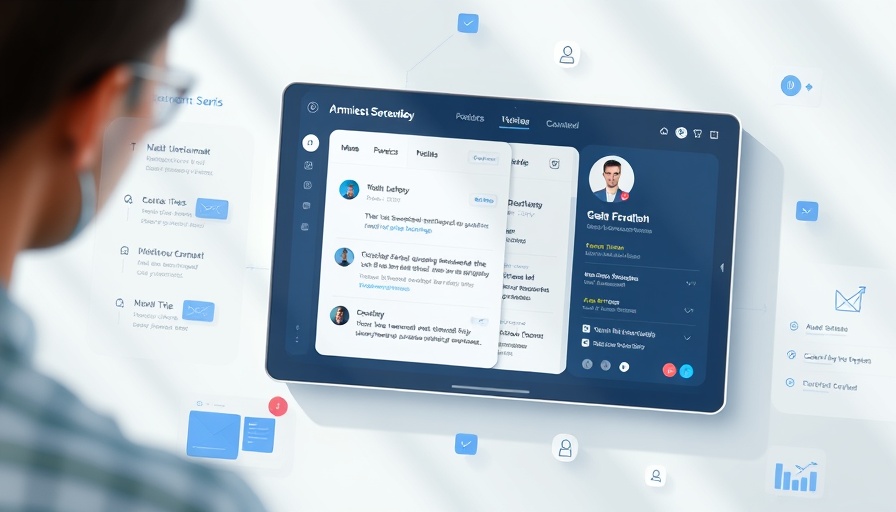
Unlock New Growth Opportunities with RocketReach
The digital landscape is bustling with opportunities, yet business owners often grapple with the challenge of connecting with the right contacts. The difficulty of accessing accurate and actionable data can impede growth. To navigate this, tools like RocketReach emerge as essential allies. This platform is tailored for sales, marketing, and talent acquisition teams, ensuring they reach the right people at the right time.
Why Accurate Data Matters in Business
In today's fast-paced market, outdated or incorrect contact information can lead to wasted resources and missed opportunities. Businesses must pivot away from guesswork and leverage precise data to engage with potential customers and candidates effectively. RocketReach, with its extensive database of over 700 million profiles, alleviates this concern by providing reliable contact information, thereby reducing the time spent on searching for leads.
Transforming Outreach with AI-Powered Features
RocketReach stands out not only for its vast data but also for its intelligent features designed to enhance outreach efforts. Its AI Recommendations offer insights into new markets and potential contacts based on user behavior, guiding businesses to focus their outreach on the most promising prospects. Additionally, the Autopilot feature assists in building automated workflows, allowing users to engage with prospective leads without manual intervention.
Seamless Integration and Usability
Ease of use is crucial for any software platform. RocketReach excels in this area with its intuitive interface and seamless integration capabilities. By syncing with popular CRMs like Salesforce and HubSpot, businesses can integrate their sales and marketing efforts effortlessly, cultivating a streamlined approach to lead generation and customer engagement.
Maximizing ROI through Data Enrichment
Data enrichment is another vital aspect where RocketReach proves invaluable. With its powerful Data Enrichment API, businesses can enhance their internal databases with up-to-date insights. This capability empowers organizations to implement more informed strategies, ensuring their outreach is grounded in fresh and relevant data.
Gaining Insights through Intent Data
Understanding buyer behavior is key to crafting effective outreach strategies. RocketReach’s Intent Data feature allows businesses to identify prospects actively seeking solutions within their market. This behavioral analysis means that teams can direct their efforts more towards leads who are already in the purchasing mindset, enhancing the chances of conversion.
Real Success Stories: Businesses Boosting Their Growth
Numerous organizations have reported a significant uplift in their engagement metrics when utilizing RocketReach. Take, for example, a small consultancy that expanded its client base by 30% in just three months of using the platform. Such testimonials underscore the real-world impact of having accurate, actionable data at one’s fingertips.
What Businesses Should Consider Before Adopting RocketReach
Before diving into any new tool, it’s essential for businesses to evaluate not only its features but also their specific needs. A clear understanding of how RocketReach’s offerings align with their marketing and sales goals will help in realizing the platform's full potential. Additionally, while the platform boasts impressive deliverability rates, it’s important for users to continually test and refine their outreach strategies to achieve optimal results.
Conclusion: Your Next Step Towards Enhanced Business Growth
Unlocking the full potential of your business requires a strategic approach to both outreach and contact management. By adopting a solution like RocketReach, business owners can harness the power of verified data, automated workflows, and integrated systems to not only enhance their outreach efforts but also win more business. Take the step towards informed engagement—explore what RocketReach can do for your growth journey today!
 Add Row
Add Row  Add
Add 




Write A Comment